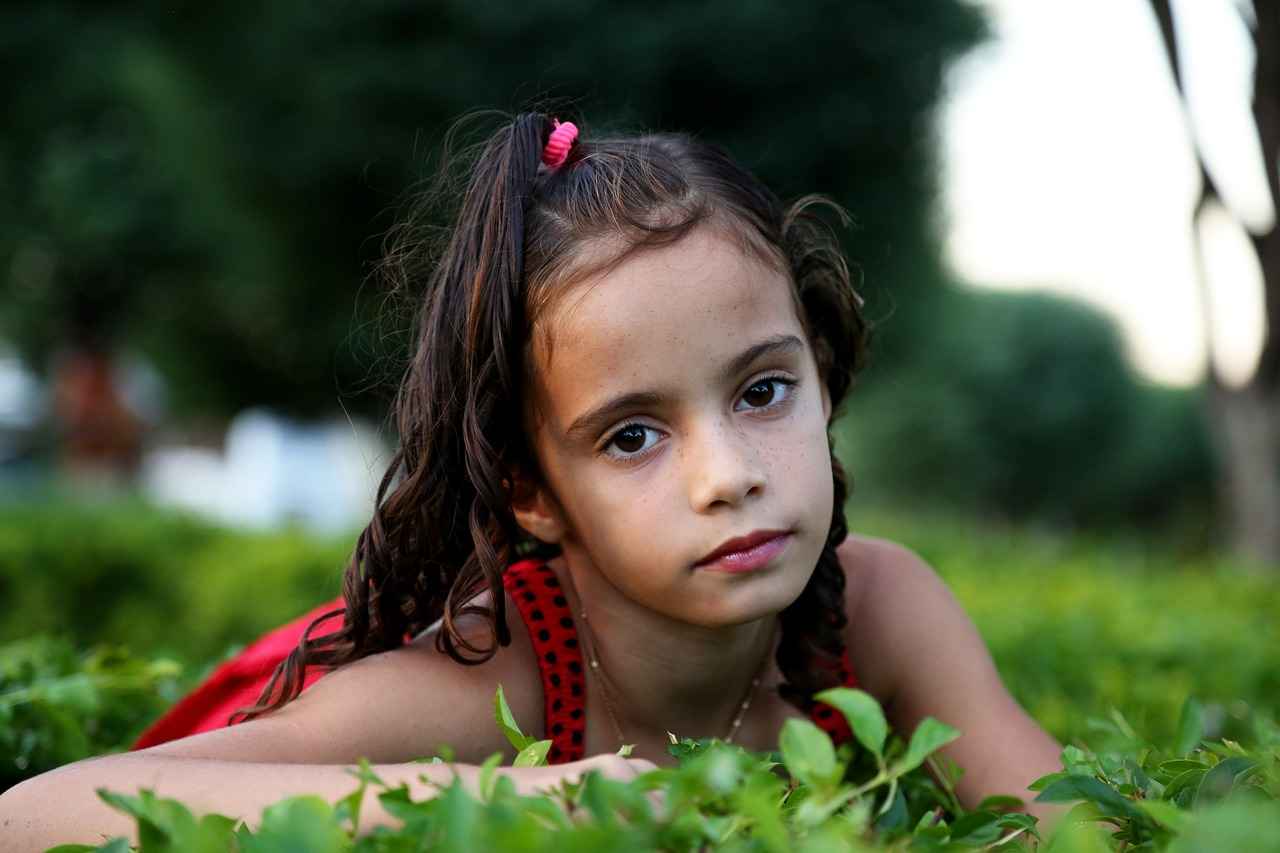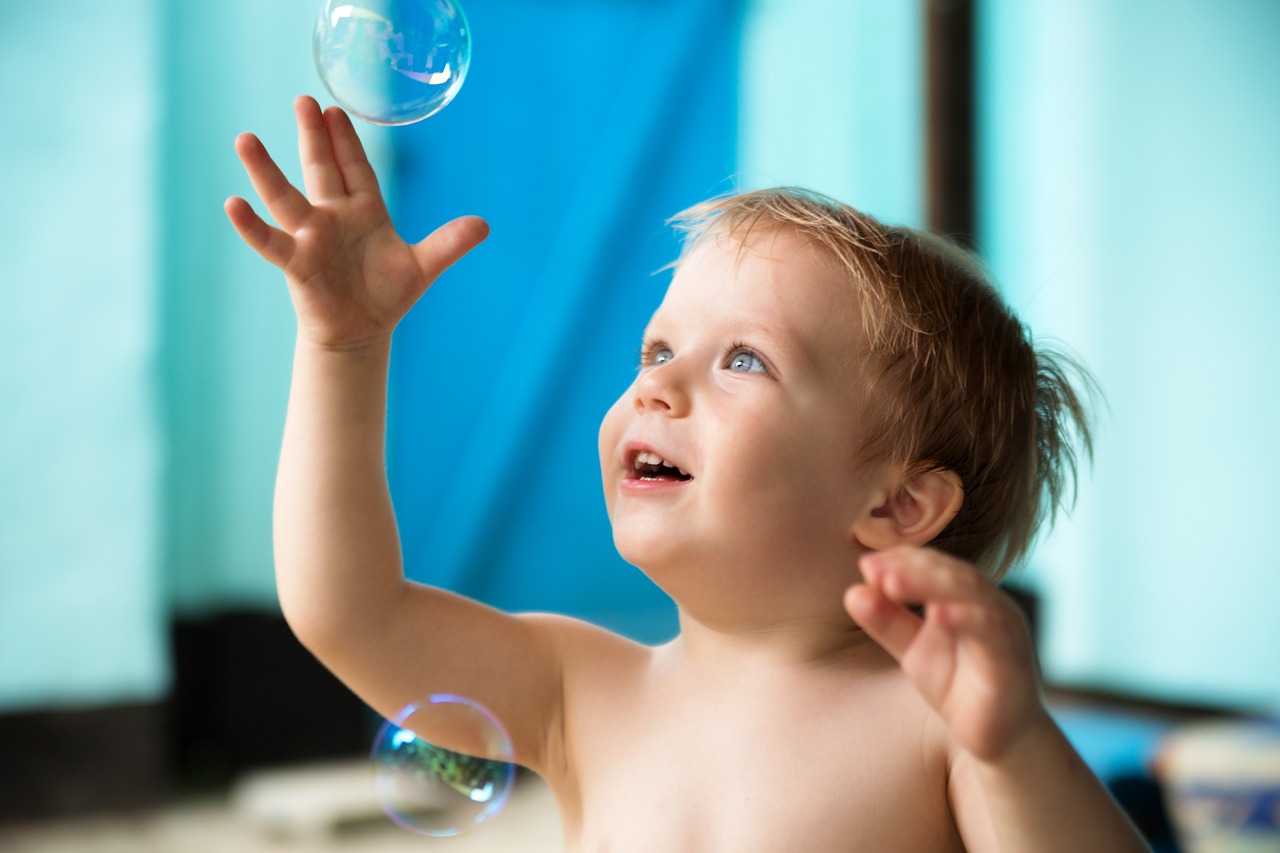This article provides a collection of entertaining movie trivia specifically designed for kids, making family movie nights more engaging and interactive.
The Magic of Movie Trivia
Understanding the significance of movie trivia can greatly enhance family movie nights. By sharing fun facts, families can foster discussions and spark interest in film history among kids. This not only makes the experience more enjoyable but also educational.
Classic Animated Movies
Explore fun facts about beloved animated films that have captivated generations. These movies are not only entertaining but also reveal the creativity and artistry behind these timeless classics.
- Disney’s Iconic Characters: Delve into the origins and characteristics of Disney’s most famous characters, showcasing their impact on pop culture and children’s imaginations.
- The First Disney Princess: Discover the story behind Snow White, the first Disney princess, and how she set the stage for future animated heroines.
- Pixar Innovations: Learn about Pixar’s groundbreaking animation techniques that revolutionized the film industry and brought beloved characters to life.
Fun Facts About Pixar Films
Uncover interesting trivia about Pixar films, including hidden Easter eggs and the connections between different movies in the Pixar universe. These little details can make watching the films even more enjoyable for kids.
Live-Action Family Favorites
Examine popular live-action films that are perfect for family viewing, complete with trivia that will entertain and educate kids. These films often come with memorable quotes and catchphrases that have become part of everyday language.
- Behind the Scenes of Famous Films: Get insights into the making of iconic live-action films, highlighting the challenges and triumphs faced by filmmakers.
- Memorable Quotes and Catchphrases: Explore famous quotes from family-friendly movies that emphasize their cultural significance.
The Evolution of Movie Technology
Understand how advancements in technology have shaped the film industry, making movies more accessible and enjoyable for family audiences. From silent films to CGI, the journey of cinema illustrates the evolution of storytelling.
- From Silent Films to CGI: Trace the journey of cinema from its silent beginnings to the modern era of computer-generated imagery.
- The Role of Soundtracks: Examine the importance of music in movies, discussing how soundtracks enhance the viewing experience and contribute to a film’s emotional impact.
Engaging Movie Night Activities
Suggest interactive activities that families can enjoy during movie nights, making the experience more memorable and fun for kids. These activities can include:
- Trivia Quizzes: Introduce exciting trivia quizzes based on the films being watched, encouraging kids to recall details and share their favorite moments.
- DIY Movie Posters: Encourage creativity with a DIY project where kids can design their own movie posters, fostering artistic expression and engagement with the film’s themes.
Conclusion: Making Movie Nights Memorable
Incorporating trivia and fun facts into family movie nights enhances connections and creates lasting memories through shared experiences. By making movie nights interactive, families can enjoy a deeper appreciation for the films they love.

The Magic of Movie Trivia
Understanding the significance of movie trivia can greatly enhance family movie nights. Engaging with trivia not only makes the experience more enjoyable but also opens up avenues for discussions that can ignite a passion for film history among kids. When families gather to watch a movie, sharing intriguing facts about the film can lead to meaningful conversations and encourage children to ask questions about the film’s background, production, and the stories behind their favorite characters.
Movie trivia serves as a bridge connecting generations, allowing parents and grandparents to share their own experiences and memories related to classic films. This sharing can foster a sense of nostalgia while also introducing younger viewers to the rich history of cinema. For instance, discussing the evolution of animation techniques or the significance of groundbreaking films can spark an interest in film studies and storytelling.
Moreover, incorporating trivia into movie nights can make them more interactive. Families can take turns sharing fun facts or even organize trivia games based on the movies they watch. This not only enhances the entertainment value but also promotes critical thinking and enhances children’s comprehension skills as they connect facts to the narrative they are viewing.
Overall, understanding and sharing movie trivia can transform a simple movie night into a memorable learning experience. It encourages curiosity about film-making and storytelling, enriching children’s appreciation for the art of cinema. By making movie trivia a part of family movie nights, you are not just watching films; you are creating a shared adventure filled with learning and fun.

Classic Animated Movies
have a special place in the hearts of audiences young and old. These films not only entertain but also inspire creativity and imagination. Let’s dive into some fascinating facts about these beloved animated classics that have captivated generations.
- Timeless Storytelling: Animated films often convey universal themes such as friendship, bravery, and love, making them relatable across different cultures and ages.
- Artistic Innovation: The artistry involved in creating animated films is remarkable. From hand-drawn sketches to cutting-edge CGI, each film showcases the evolution of animation techniques.
- Iconic Voice Actors: Many animated films feature renowned voice actors who bring characters to life. For example, Robin Williams’ portrayal of the Genie in Aladdin is unforgettable and adds depth to the character.
- Cultural Impact: Classic animated movies have influenced pop culture significantly, introducing phrases, songs, and characters that are recognized worldwide.
- Hidden Easter Eggs: Many animated films, especially from studios like Pixar, are known for including hidden references and Easter eggs that connect different movies, creating a rich viewing experience.
These films not only entertain but also serve as a gateway for children to explore various themes and values. For instance, The Lion King teaches lessons about responsibility and the circle of life, while Finding Nemo emphasizes the importance of family and perseverance.
As we celebrate these animated classics, it’s essential to recognize the creativity and hard work that goes into making them. Behind every frame is a team of talented artists, writers, and animators striving to create magic on screen.
In conclusion, classic animated movies are more than just entertainment; they are a treasure trove of creativity and artistry that continues to inspire new generations. So, gather the family, pick a classic animated film, and enjoy a delightful movie night filled with laughter and valuable lessons!
Disney’s Iconic Characters
have become a significant part of global pop culture, captivating the hearts and minds of children and adults alike for generations. These characters not only entertain but also convey important life lessons, making them relatable and memorable.
The origins of Disney’s most famous characters can be traced back to the early 20th century, when Walt Disney and his team began crafting animated stories that resonated with audiences. For instance, Mickey Mouse, introduced in 1928, was born out of a desire for a character that embodied charm and mischief. His iconic status was cemented through his adventures and his ability to connect with viewers on an emotional level.
Another beloved character, Donald Duck, debuted shortly after Mickey and quickly became known for his comical personality and distinctive voice. His stories often reflect themes of perseverance and friendship, resonating with audiences of all ages.
Disney’s characters extend beyond just the animated realm. The Disney Princess franchise has introduced characters like Snow White, Cinderella, and Moana, each with unique stories that empower young girls. Snow White, the first Disney princess, set the standard with her tale of kindness and resilience, paving the way for future heroines who embody strength and independence.
Moreover, Disney characters have significantly impacted children’s imaginations, inspiring creativity and play. From dressing up as their favorite princesses to reenacting scenes from films, children engage with these characters in ways that enhance their storytelling skills and emotional understanding.
In conclusion, Disney’s iconic characters are more than just figures on a screen; they are cultural symbols that have shaped childhood experiences and continue to influence new generations. Their timeless stories and relatable traits ensure they remain a cherished part of our collective imagination.
The First Disney Princess
is a title that resonates with many, as it marks the beginning of a legacy that has enchanted audiences for generations. Snow White, introduced in 1937, was not just the first Disney princess but also the first-ever animated feature film, setting a precedent for storytelling in animation.
Snow White’s journey began with the Brothers Grimm fairy tale, which was adapted into a film by Walt Disney. This groundbreaking movie showcased innovative animation techniques and rich storytelling, captivating audiences with its vibrant characters and memorable songs. The film’s success paved the way for future animated heroines, influencing the portrayal of female characters in cinema.
One of the most significant aspects of Snow White’s character is her embodiment of innocence and kindness. She is portrayed as a gentle soul, whose compassion and resilience shine through even in the face of adversity. This characterization set a standard for subsequent Disney princesses, who often reflect similar traits, such as bravery and optimism.
Snow White’s impact extends beyond her film. She became a cultural icon, representing the ideals of beauty and virtue. This representation sparked discussions about female roles in media and how they influence young audiences. Over the years, Disney princesses have evolved, with characters like Mulan and Moana breaking traditional molds and showcasing diverse backgrounds and strengths.
In conclusion, Snow White’s legacy as the first Disney princess is not merely about her story; it is about how she transformed animation and shaped the future of female characters in film. Her tale continues to inspire new generations, reminding us of the power of storytelling and the importance of strong, relatable heroines.
Pixar Innovations
Pixar Animation Studios has been a trailblazer in the world of animation, introducing groundbreaking techniques that have not only transformed their own films but have also influenced the entire film industry. From the moment Pixar released Toy Story in 1995, it became clear that they were pushing the boundaries of what animated films could achieve.
One of the most significant innovations was the use of 3D computer-generated imagery (CGI). This technology allowed animators to create more realistic characters and environments, bringing a new level of depth and emotion to storytelling. The meticulous attention to detail in textures, lighting, and movement has set a standard that many studios strive to replicate.
Furthermore, Pixar’s unique storytelling approach combines humor, heart, and relatable themes, making their characters resonate with audiences of all ages. The studio’s commitment to character development and emotional arcs has redefined how animated stories are crafted, creating a lasting impact on viewers.
Another remarkable aspect of Pixar’s innovation is their use of technology to enhance the animation process. For instance, the development of RenderMan, their proprietary rendering software, has allowed for stunning visual effects and seamless integration of CGI with traditional animation techniques. This not only streamlines production but also elevates the cinematic experience.
In addition to technical advancements, Pixar has pioneered the concept of storyboarding in a collaborative environment, where teams work together to refine scripts and visual narratives. This collaborative spirit fosters creativity and ensures that every film is a product of collective passion and expertise.
As Pixar continues to innovate, they remain committed to telling stories that matter, exploring themes of friendship, family, and the human experience. Their legacy is not just in the films they produce but in the inspiration they provide to future generations of animators and filmmakers.
In conclusion, Pixar’s innovations have reshaped the animation landscape, proving that with creativity and technology, the possibilities are limitless. Their films not only entertain but also ignite a passion for storytelling that resonates across cultures and generations.
Fun Facts About Pixar Films
Pixar Animation Studios has captivated audiences of all ages with its innovative storytelling and stunning animation. Here are some fascinating trivia facts that reveal the magic behind Pixar films:
- Hidden Easter Eggs: Pixar is famous for including hidden references and Easter eggs in its films. For example, the iconic Pizza Planet truck appears in nearly every Pixar movie, creating a fun challenge for fans to spot it.
- Connected Universe: Many Pixar films are interconnected, sharing characters and themes. For instance, the character of A113, a reference to a classroom at the California Institute of the Arts, can be found in multiple films, including “Toy Story” and “Finding Nemo.”
- Voice Cameos: Pixar often features well-known actors and celebrities as voice talents. For example, the beloved character of Buzz Lightyear is voiced by Tim Allen, who brought a unique charm to the role.
- Groundbreaking Technology: Pixar revolutionized the animation industry with its use of computer-generated imagery (CGI). The release of “Toy Story” in 1995 marked the first entirely CGI animated feature film, setting a new standard for animation.
- Inspiration from Real Life: Many Pixar films draw inspiration from real-life experiences and emotions. “Inside Out,” for instance, was inspired by the director’s own childhood and the complexities of growing up.
These fun facts not only enhance our appreciation for Pixar’s creativity but also encourage viewers to delve deeper into the storytelling and artistry of each film. Next time you watch a Pixar movie, take a moment to look for these hidden gems and connections!

Live-Action Family Favorites
are a wonderful way to bring families together for an enjoyable movie night. These films not only entertain but also provide valuable life lessons and foster family bonding. Here, we will explore some of the most popular live-action films suitable for family viewing, along with interesting trivia that will both entertain and educate kids.
- The Parent Trap: A classic tale of twin sisters who reunite to bring their divorced parents back together. Did you know that Lindsay Lohan played both roles in this film, showcasing her incredible acting skills?
- Matilda: Based on Roald Dahl’s beloved book, this film tells the story of a gifted girl with extraordinary powers. Fun fact: the actress who played Matilda, Mara Wilson, was only 6 years old during filming!
- Night at the Museum: This film brings history to life as museum exhibits come alive at night. An interesting tidbit is that Robin Williams portrayed Theodore Roosevelt, and his performance was both humorous and heartwarming.
- Jumanji: Welcome to the Jungle: A modern take on the classic board game, this film features an exciting adventure filled with action and comedy. Did you know that the cast had to undergo intense training for their roles, including stunt work and physical challenges?
These films not only provide laughter and excitement but also spark discussions about themes such as friendship, family, and courage. Incorporating trivia into your movie night can enhance the experience, making it more interactive. For example, ask your kids what they think about the characters’ choices or how they would react in similar situations.
In conclusion, are not just about entertainment; they also offer educational insights and opportunities for meaningful conversations. By sharing trivia and fun facts, you can create an engaging and memorable movie night that your family will cherish for years to come.
Behind the Scenes of Famous Films
offers a fascinating glimpse into the intricate processes involved in creating some of the most beloved live-action movies. Filmmakers encounter a myriad of challenges and triumphs as they bring their visions to life, often overcoming obstacles that test their creativity and resolve.
One of the primary challenges filmmakers face is budget constraints. Producing a high-quality film requires significant financial investment, and directors often have to make tough decisions about where to allocate resources. This can lead to innovative solutions, such as utilizing practical effects instead of costly CGI, which can sometimes yield more authentic results.
Additionally, time management plays a crucial role in film production. Directors and crew members work under tight schedules, often leading to long hours on set. This pressure can foster a unique camaraderie among cast and crew, as they band together to meet deadlines and solve problems in real-time.
Another significant aspect is the casting process. Finding the right actors to embody characters is critical. Auditions can be grueling, and sometimes the perfect fit is discovered in unexpected places. This serendipity can lead to remarkable performances that resonate with audiences.
Furthermore, the collaboration between departments is essential for a film’s success. From cinematographers to costume designers, each team must work in harmony to create a cohesive vision. This collaborative spirit often results in creative breakthroughs that elevate the final product.
In conclusion, the journey of making iconic live-action films is filled with challenges that require resilience, creativity, and teamwork. These behind-the-scenes stories not only enhance our appreciation of the films we love but also remind us of the hard work and dedication that goes into every frame. Understanding these elements can deepen our connection to cinema and inspire the next generation of filmmakers.
Memorable Quotes and Catchphrases
Family-friendly movies have a unique way of embedding themselves into our daily conversations through their memorable quotes and catchphrases. These lines often carry cultural significance, reflecting values and lessons that resonate with audiences of all ages. Let’s explore some iconic quotes that have transcended the screen and become part of our everyday language.
- “Just keep swimming.” – Finding Nemo
This simple yet profound line encourages perseverance and positivity, reminding us to keep moving forward despite challenges. - “To infinity and beyond!” – Toy Story
Buzz Lightyear’s enthusiastic declaration has become synonymous with ambition and the limitless possibilities of imagination. - “There’s no place like home.” – The Wizard of Oz
This classic quote emphasizes the importance of family and belonging, resonating with audiences across generations. - “Hakuna Matata!” – The Lion King
Meaning “no worries,” this phrase promotes a carefree attitude and has become a popular mantra for embracing life’s challenges. - “You’ve got a friend in me.” – Toy Story
This heartfelt line highlights the value of friendship and loyalty, reminding us of the importance of supporting one another.
These quotes not only entertain but also impart valuable life lessons, making them significant in both cinematic and real-world contexts. They serve as reminders of the themes explored in these films, such as friendship, perseverance, and the importance of home. As families gather for movie nights, sharing these quotes can spark conversations about their meanings and relevance in our lives.
In conclusion, the cultural impact of these memorable quotes extends far beyond the screen, enriching our language and interactions. By embracing these phrases, we keep the spirit of these beloved films alive in our everyday conversations.

The Evolution of Movie Technology
has been a fascinating journey that has significantly transformed the film industry. Over the decades, technological advancements have not only enhanced the visual experience but also made movies more accessible and enjoyable for family audiences. This evolution has allowed for a richer storytelling experience, captivating viewers of all ages.
In the early days of cinema, films were primarily silent, relying heavily on visual storytelling and intertitles to convey the plot. As technology progressed, the introduction of sound in the late 1920s revolutionized the industry. Talkies brought characters to life with their voices, allowing audiences to connect with them on a deeper level. This was a pivotal moment that laid the groundwork for future innovations.
Fast forward to the 21st century, the rise of computer-generated imagery (CGI) has transformed how stories are told. Movies like Jurassic Park and Avatar showcased the incredible potential of CGI, creating visually stunning worlds that were previously unimaginable. These advancements have not only made films more visually appealing but also allowed for complex narratives that engage family audiences.
Another significant development is the accessibility of films through various platforms. With the advent of streaming services like Netflix and Disney+, families can now enjoy a vast library of films from the comfort of their homes. This accessibility has made it easier for parents to introduce their children to classic and contemporary films, fostering a love for cinema.
Moreover, the integration of interactive elements in films, such as choose-your-own-adventure formats, has further enriched the viewing experience. This allows families to engage with the story actively, making movie nights more interactive and enjoyable.
In conclusion, the evolution of movie technology has significantly shaped the film industry, enhancing the accessibility and enjoyment of movies for family audiences. As technology continues to advance, we can only anticipate even more exciting developments that will further enrich our cinematic experiences.
From Silent Films to CGI
has been a fascinating journey that reflects the evolution of storytelling in cinema. The history of film began in the late 19th century with silent films, where visuals alone conveyed narratives. These early films, often just a few minutes long, relied heavily on expressive acting and intertitles to communicate dialogue and plot points. Iconic figures like Charlie Chaplin and Buster Keaton emerged during this era, captivating audiences with their physical comedy and storytelling prowess.
As technology advanced, the introduction of sound in films during the late 1920s marked a significant turning point. The release of “The Jazz Singer” in 1927, the first feature-length talkie, revolutionized the industry. Audiences were no longer just watching; they were listening, which added a new dimension to storytelling. This era saw the birth of musicals and dialogue-driven narratives, enhancing the emotional connection between characters and viewers.
The transition from black-and-white to color films further enriched cinematic storytelling. The first color film, “The Wizard of Oz” (1939), dazzled audiences with its vibrant visuals, making the viewing experience more immersive. This shift allowed filmmakers to explore new artistic avenues, using color to symbolize emotions and themes.
Fast forward to the late 20th century, the advent of computer-generated imagery (CGI) transformed filmmaking once again. Movies like “Jurassic Park” (1993) and “Toy Story” (1995) showcased the possibilities of CGI, allowing filmmakers to create fantastical worlds and lifelike characters that were previously unimaginable. This technology not only enhanced visual storytelling but also opened doors for innovative narratives that blended reality with imagination.
Today, CGI continues to evolve, with advancements in virtual reality and augmented reality pushing the boundaries of how stories are told. The journey from silent films to CGI illustrates how technology and creativity intertwine, continually reshaping the cinematic landscape and enriching the art of storytelling.
The Role of Soundtracks
Music plays a pivotal role in the realm of cinema, serving as a powerful tool that enhances the overall viewing experience. The soundtrack of a film is not just an accompaniment; it is a fundamental element that can shape the audience’s emotions and perceptions. From the moment the opening credits roll, the music sets the tone, guiding viewers through the narrative journey.
One of the most significant ways soundtracks enhance films is through their ability to evoke emotions. A well-composed score can heighten tension during thrilling scenes, create a sense of nostalgia in reflective moments, or amplify joy during uplifting sequences. For instance, consider the iconic scores of films like Star Wars or The Lion King; these soundtracks are instantly recognizable and deeply intertwined with the characters and storylines, enriching the audience’s emotional connection.
Moreover, soundtracks also contribute to the cultural impact of films. They often introduce memorable themes and motifs that resonate beyond the screen. Songs from movies can become cultural phenomena, influencing music charts and sparking trends. For example, the song “Let It Go” from Disney’s Frozen not only topped charts but also became an anthem for empowerment and self-acceptance.
| Film | Composer | Notable Track |
|---|---|---|
| The Lion King | Hans Zimmer | Circle of Life |
| Star Wars | John Williams | Main Theme |
| Frozen | Kristen Anderson-Lopez & Robert Lopez | Let It Go |
In conclusion, the significance of soundtracks in films cannot be overstated. They not only enhance the emotional experience but also contribute to the film’s cultural legacy. As audiences continue to engage with cinema, the power of music will remain a vital component of storytelling, ensuring that the emotional resonance of films endures long after the credits roll.

Engaging Movie Night Activities
Family movie nights are a cherished tradition, offering a perfect opportunity to bond and create lasting memories. To make these evenings even more enjoyable, consider incorporating some interactive activities that can engage everyone, especially the kids. Here are some suggestions to transform a standard movie night into a fun-filled experience:
- Movie Trivia Games: Prepare a list of trivia questions related to the movie you are watching. This can include questions about the plot, characters, or fun behind-the-scenes facts. Kids can take turns answering and earn points for correct answers. This not only boosts their memory but also enhances their understanding of the film.
- DIY Snack Bar: Set up a snack station where kids can create their own movie snacks. Provide popcorn, candies, and various toppings. Encourage them to mix and match flavors, allowing creativity to flow while they enjoy their custom treats during the film.
- Character Dress-Up: Invite family members to dress as their favorite characters from the movie. This adds an element of fun and excitement, and it can lead to an engaging discussion about the characters’ traits and motivations.
- Movie Bingo: Create bingo cards featuring common movie tropes or phrases that may appear during the film. As the movie plays, players can mark off squares when they spot these elements, making for a lively and interactive viewing experience.
- Scene Reenactments: After watching the movie, encourage kids to reenact their favorite scenes. This activity not only fosters creativity but also helps them express their understanding of the story and characters.
Incorporating these activities into your movie night can significantly enhance the experience, making it more memorable and fun for everyone involved. By engaging in these interactive elements, families can deepen their connections and enjoy a night filled with laughter and joy.
Trivia Quizzes
can transform a simple family movie night into an exciting and interactive experience. By incorporating engaging quizzes based on the films being watched, families can enjoy a fun-filled evening while also enhancing their knowledge about the movies. These quizzes not only challenge kids to recall details but also encourage them to share their favorite moments from the film.
Here are some ideas to create exciting trivia quizzes:
- Character Challenges: Ask questions about specific characters, such as their catchphrases, favorite activities, or memorable quotes. For example, “What does Woody say to get Buzz to come out of hiding?”
- Plot Puzzles: Create questions that require kids to piece together important plot points. For instance, “What event brings the characters together in The Lion King?”
- Behind-the-Scenes Trivia: Share interesting facts about the making of the movie. Questions like “Which studio produced Frozen?” can spark curiosity about film production.
To make it even more engaging, families can turn the trivia into a friendly competition. Keep score and reward the winner with a small prize, such as a movie-themed sticker or a special treat. This not only makes the quiz fun but also encourages kids to pay attention to details they might otherwise overlook.
Additionally, parents can encourage kids to come up with their own trivia questions after watching the film. This not only reinforces what they’ve learned but also fosters creativity and critical thinking as they think about what made the movie special to them.
Incorporating trivia quizzes into family movie nights can significantly enhance the experience, making it more interactive and memorable. Not only do these activities promote engagement, but they also help children develop a deeper appreciation for the films they love.
DIY Movie Posters
is a fantastic way to encourage children’s creativity and artistic expression. This engaging project allows kids to immerse themselves in the world of cinema while exploring their own artistic talents. By designing their own movie posters, children can connect with the themes and characters of their favorite films in a unique and personal way.
Here’s how to turn this idea into a fun-filled activity:
- Materials Needed:
- Poster boards or large sheets of paper
- Markers, colored pencils, or paints
- Magazines for cutouts
- Glue and scissors
- Stickers and other decorative items
- Choose a Movie:
Let the kids pick a movie they love or one they want to learn more about. This could be an animated classic, a recent blockbuster, or even a timeless family favorite.
- Research Themes:
Encourage children to think about the movie’s themes, characters, and key moments. Discussing these aspects can inspire their designs and help them understand the film better.
- Design the Poster:
Kids can create a title, draw characters, and add quotes or taglines from the film. This is a chance for them to express their interpretation of the movie.
- Display Their Artwork:
Once completed, hang the posters around the house or create a mini-exhibition. This not only boosts their confidence but also sparks conversations about the films.
By engaging in this DIY project, children not only enhance their artistic skills but also deepen their appreciation for film. This activity fosters a sense of accomplishment and encourages a love for storytelling, making it a perfect addition to family movie nights.

Conclusion: Making Movie Nights Memorable
Incorporating trivia and fun facts into family movie nights is not just a way to pass the time; it is a powerful tool that can significantly enhance the overall experience. By sharing interesting insights about the films being watched, families can foster deeper connections and spark engaging conversations. This interactive approach transforms a simple movie night into an opportunity for learning and bonding, making it far more memorable.
When families discuss trivia related to the films, it encourages active participation from all members, especially children. This engagement can lead to a greater appreciation for the art of filmmaking and an understanding of the cultural context surrounding each movie. For instance, knowing the background of a beloved character or the challenges faced during production can deepen the emotional connection viewers have with the film.
Moreover, these shared experiences create lasting memories. Imagine a family recalling the time they watched a movie and learned a fascinating fact about its production or the voice actors behind their favorite characters. Such moments become cherished stories that families can revisit for years to come.
In addition, incorporating trivia into movie nights can also serve as an educational tool. Parents can use these fun facts to teach their children about various subjects such as history, art, or science, all while enjoying a film together. This blending of entertainment and education can make learning feel effortless and enjoyable.
Ultimately, the importance of trivia and fun facts lies in their ability to elevate the movie-watching experience. By embracing this interactive element, families can create a rich tapestry of shared experiences that not only entertain but also educate and connect them on a deeper level.
Frequently Asked Questions
- What age group is this movie trivia suitable for?
This trivia is designed for kids aged 5 to 12, making it perfect for family movie nights where everyone can join in on the fun!
- How can movie trivia enhance our family movie nights?
Movie trivia sparks conversations and encourages kids to think critically about the films they watch, turning a simple movie night into an engaging learning experience.
- Are there specific trivia questions for popular animated movies?
Absolutely! We have a treasure trove of facts about beloved classics like Disney and Pixar films that will amaze and entertain the whole family.
- Can we create our own trivia questions?
Definitely! Encourage your kids to come up with their own questions based on the movies you watch. It’s a great way to boost creativity and keep everyone involved!
- What activities can we do alongside movie trivia?
Try hosting trivia quizzes, making DIY movie posters, or even acting out favorite scenes! These activities make movie nights more interactive and memorable.












